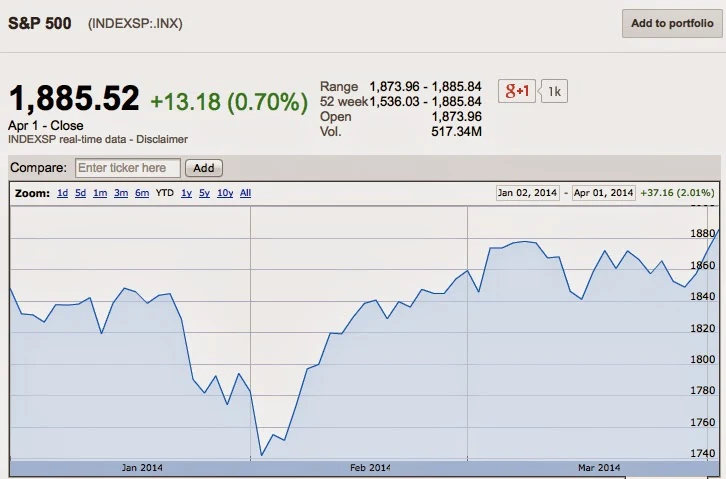The chart comes from The Motley Fool, here, and has nothing to do per se with the subject of the current debate about income inequality occasioned by the US tour of French economist Thomas Piketty promoting his new book Capital in English translation.
But the chart offers a little appreciated explanation for why income inequality has grown in the United States: the tax code of the United States itself treats income unequally, giving preference to long term capital gains. Key here isn't just that rates increase progressively and are unequal, but that capital gains income is at all levels taxed unequally compared to ordinary income, at lower rates. Is it a surprise then that one form of income would tend to grow more than the other in order to take advantage of the lower rates?
Ordinary income has been taxed at extraordinarily high rates off and on since the First World War while long term capital gains have been taxed at comparatively much lower rates off and on just about as long, as a favor to the few who have historically been able to play in that sandbox. It shouldn't surprise us though that the half of the nation which over time has joined the investor class has benefited disproportionately from this arrangement.
It has been a principle of conservative economics from the time of Reagan that if you want less of something, tax it. Well that's what has happened to ordinary income, where wages have been stagnating for some time while gains from investments have soared. You push here, it comes out there. Ordinary income tax rates have come down and stayed down since Reagan's revolution, it is true, but the differential between ordinary income tax rates and long term capital gains taxes has remained, favoring the returns from capital.
Cullen Roche here takes the view that we should raise taxes on long term capital gains, especially for the top 0.1% where he believes most of the inequality shows up:
The solution, in my opinion, is simple and based on a relatively widespread misunderstanding. We currently tax “investment income” favorably. The rationale for this is that we want to incentivize “investment”. That makes sense except for the fact that very few of the people transacting on secondary markets or obtaining dividend payments are actually promoting investment. In fact, one could argue that dividends disincentivize firms from using profits in a more innovative manner. And transactions on secondary exchanges only finance investment in the case of secondary offerings. Otherwise, buying stocks and bonds is a simple allocation of savings and does not remotely resemble the financing of investment. Why these forms of income are tax advantaged makes very little sense in my view. So a higher tax rate on dividends and secondary market transactions seems to make a lot of sense in my view.
I beg to differ. The tax code as it stands is doubly offensive in that it not only favors one form of income over another but that it also discriminates against income as it grows. To make the tax code "fair", it should treat all income the same way. If we equalized all tax rates to 10% irrespective of level or source or time, there would be so much opportunity to make money in this country that yours truly, Cullen Roche and Thomas Piketty would all have something far better to do than write about this, and you something far better to do than read about it.









_9M-MRO_-_MSN_28420_404_(9272090094).jpg)












